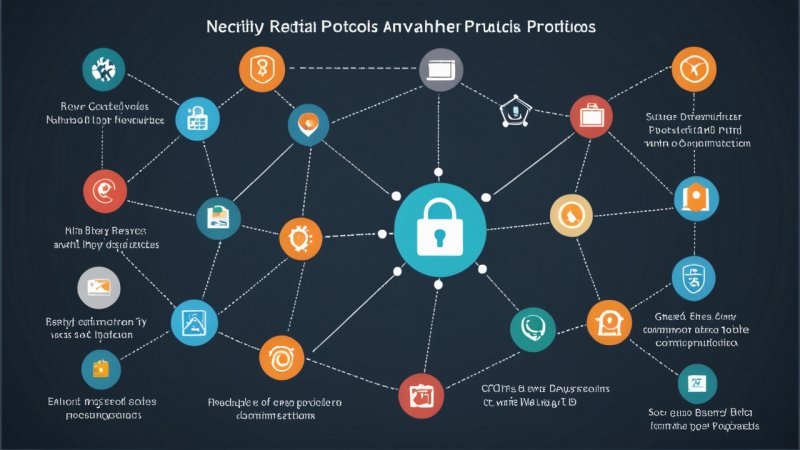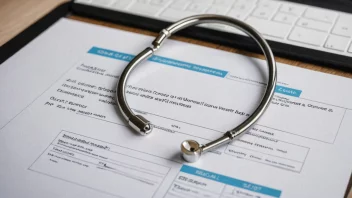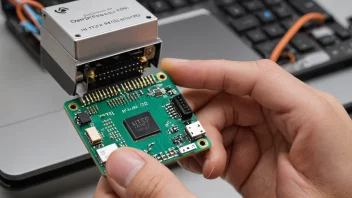Introduction
In today's digital landscape, data privacy is more important than ever. With increasing instances of data breaches and cyber threats, understanding the role of network protocols in ensuring data privacy is crucial. This article will guide you through the key network protocols that protect data privacy, their functionalities, and how they can be implemented effectively.
Step 1: Grasp the Basics of Network Protocols
Before delving into specific protocols, it’s essential to understand what a network protocol is. A network protocol is a set of rules that govern data communication over a network. It defines how data is transmitted, received, and interpreted between devices. Understanding these basics lays the foundation for recognizing their importance in data privacy.
Types of Network Protocols
- Transmission Control Protocol (TCP): Ensures reliable communication between devices.
- User Datagram Protocol (UDP): Used for faster transmissions without the need for reliability checks.
- Hypertext Transfer Protocol Secure (HTTPS): An extension of HTTP that uses SSL/TLS to secure data.
- Internet Protocol Security (IPSec): A suite of protocols that secures Internet Protocol (IP) communications.
Step 2: Explore Privacy-Focused Network Protocols
Several protocols are specifically designed to enhance data privacy in communications. Here are a few key protocols:
Secure Sockets Layer (SSL) and Transport Layer Security (TLS)
SSL and TLS are cryptographic protocols designed to provide secure communication over a computer network. They encrypt data in transit, which helps in preventing eavesdropping and tampering.
Virtual Private Network (VPN) Protocols
VPN protocols such as OpenVPN, L2TP/IPsec, and IKEv2/IPsec encrypt data between your device and the VPN server, ensuring that your online activities are private even on unsecured networks.
Step 3: Implementing Network Protocols in Data Privacy
To ensure data privacy through network protocols, consider the following implementation steps:
Choose the Right Protocol
Select a protocol that best meets your data privacy needs. For web applications, HTTPS is essential. For secure remote access, consider implementing VPN protocols.
Regularly Update Protocols
Keeping your protocols updated is crucial. Developers frequently release updates that patch security vulnerabilities. Regular updates help in mitigating risks associated with outdated protocols.
Conduct Security Audits
Regularly assess the security of your network protocols. Conduct security audits to identify and rectify potential vulnerabilities in your implementation.
Step 4: Case Studies on Network Protocols in Action
Understanding real-world applications can provide deeper insights into how network protocols enhance data privacy.
Case Study 1: HTTPS in E-Commerce
Many e-commerce platforms have adopted HTTPS to protect customer data during transactions. By encrypting sensitive information like credit card details, HTTPS has helped businesses build customer trust and comply with data protection regulations.
Case Study 2: VPNs for Corporate Security
Companies often utilize VPNs to allow employees to connect securely to the company network when working remotely. This not only protects sensitive corporate data but also ensures compliance with data privacy regulations.
Step 5: Best Practices for Ensuring Data Privacy
To maximize the effectiveness of network protocols in protecting data privacy, adhere to the following best practices:
- Educate Users: Ensure that all users understand the importance of using secure protocols and the risks associated with insecure communications.
- Monitor Network Traffic: Regularly monitor network traffic for unusual activities that may indicate security breaches.
- Enforce Strong Password Policies: Combine the use of secure protocols with strong password management practices to enhance overall security.
Conclusion
Understanding and implementing the right network protocols is essential for maintaining data privacy in today’s digital world. By following the steps outlined in this guide—grasping basic concepts, exploring privacy-focused protocols, implementing them correctly, learning from case studies, and adhering to best practices—you can significantly enhance the security of your data communications. Remember, data privacy is not just a technical requirement; it's a fundamental aspect of trust in the digital age.






